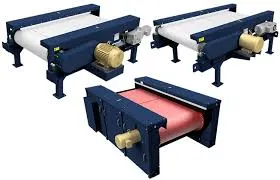

nov. . 11, 2024 18:18 Back to list
Understanding Shredder Scrap Prices Factors, Trends, and Market Insights
In the recycling and manufacturing industries, shredder scrap prices play a vital role in determining the profitability and operational efficiency of scrap dealers and recyclers. Shredders are crucial machines that process various types of materials, including metals, plastics, and electronics. The output from shredders—usually small, fragmented pieces known as shredder scrap—can be sold for recycling or further processing. Understanding the factors influencing shredder scrap prices can help stakeholders make informed decisions and adjust their strategies accordingly.
Factors Affecting Shredder Scrap Prices
1. Global Market Demand The prices of shredder scrap are heavily influenced by global market demand for recycled materials. As industries strive to adopt more sustainable practices, the demand for recycled metals and plastics has surged. Economic growth in emerging markets can increase demand, pushing prices higher.
2. Raw Material Prices The prices of virgin raw materials directly impact shredder scrap prices. When the cost of raw materials like steel, aluminum, and plastic rises, the market tends to favor recycled options, leading to higher shredder scrap prices. Conversely, if raw material prices fall, the demand for scrap may decline, resulting in lower prices.
3. Quality of Scrap Not all shredder scrap is created equal. The quality and type of material processed can significantly influence pricing. High-quality metals, such as clean aluminum or stainless steel, generally command a better price than contaminated or mixed materials. Shredders that can effectively separate and process different materials tend to yield higher-quality outputs.
4. Technological Advancements The efficiency of shredding equipment and technological advancements in recycling processes can also affect scrap prices. Newer shredding machines that produce higher-quality outputs or separate materials more effectively can improve profit margins for recyclers and, in turn, affect the overall market pricing.
5. Economic Conditions Broader economic conditions play a pivotal role in determining shredder scrap prices. During economic downturns, manufacturing slows, leading to reduced demand for scrap materials. Conversely, in a thriving economy, increased manufacturing activity drives up demand for raw and recycled materials, resulting in higher shredder scrap prices.

6. Legislative Changes Environmental regulations also impact the shredder scrap market. Policies aimed at promoting recycling and reducing landfill waste can drive up demand for shredder scrap, thereby increasing prices. Similarly, any regulations that impose restrictions on the disposal of scrap materials can lead to supply shortages, further elevating prices.
Current Trends in Shredder Scrap Prices
As of 2023, the global focus on sustainability and recycling has been more pronounced than ever. Initiatives to reduce carbon footprints and promote circular economy practices have resulted in increased investments in recycling technologies and infrastructures. This shift has led to a robust demand for shredder scrap, pushing prices upward in many regions.
Additionally, geopolitical factors, such as trade agreements and tariffs, have also influenced the market. Changes in international trade policies can either enhance or hinder the cross-border movement of scrap materials, affecting supply dynamics and pricing structures.
Moreover, the ongoing technological advancements in shredders and sorting equipment have made it easier for recyclers to enhance the quality of their scrap outputs. Innovations like AI-driven sorting systems are becoming increasingly common, allowing companies to refine their processes and maximize profitability.
Conclusion
Shredder scrap prices are influenced by a complex interplay of factors including global demand, raw material prices, technological advancements, economic conditions, and regulatory changes. For recyclers and scrap dealers, staying informed about these dynamics is crucial to navigating the ever-evolving market landscape. As sustainability continues to gain momentum, understanding these factors will be essential for maximizing returns in the scrap industry. Whether you are a scrap dealer, recycler, or manufacturer, keeping a pulse on shredder scrap prices and the factors influencing them will facilitate informed decision-making and strategic planning for the future.
Latest news
Troubleshooting Common Eddy Separator Problems
NewsJul.04,2025
The Role of Metal Recycling Plants in Circular Economy
NewsJul.04,2025
The Impact of Recycling Line Pickers on Waste Management Costs
NewsJul.04,2025
Safety Features Every Metal Shredder Should Have
NewsJul.04,2025
How Industrial Shredders Improve Waste Management Systems
NewsJul.04,2025
How Cable Granulators Contribute to Sustainable Recycling
NewsJul.04,2025